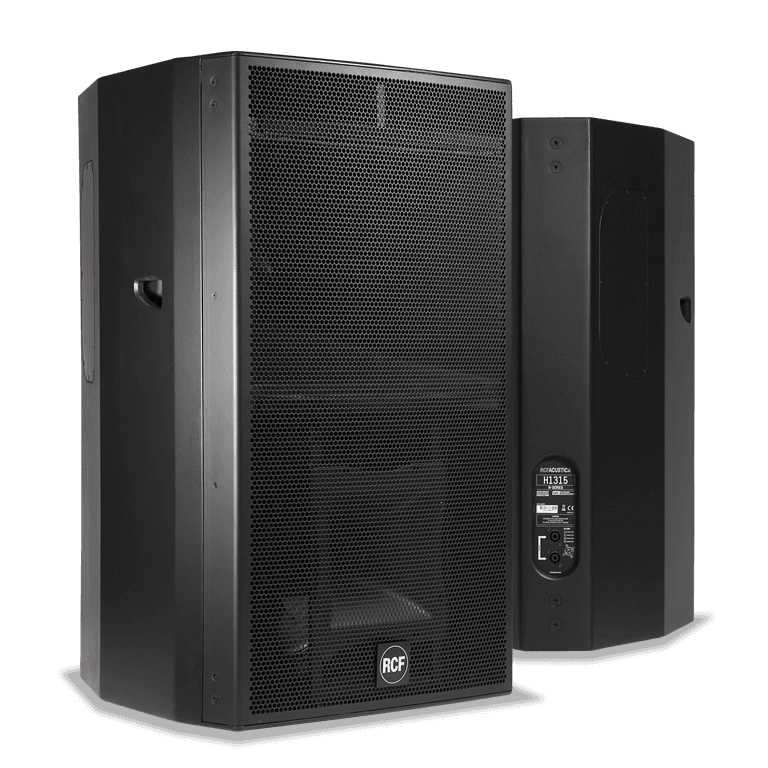Highly customized RCF solution for Baku Olympic Stadium
Highly customized RCF solution for Baku Olympic Stadium
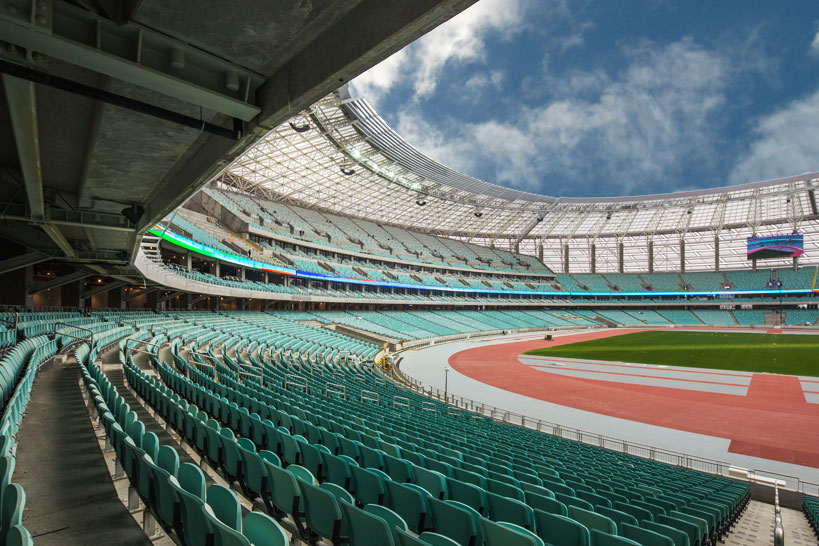
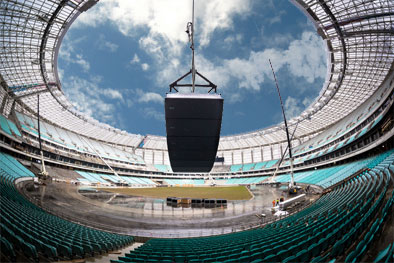
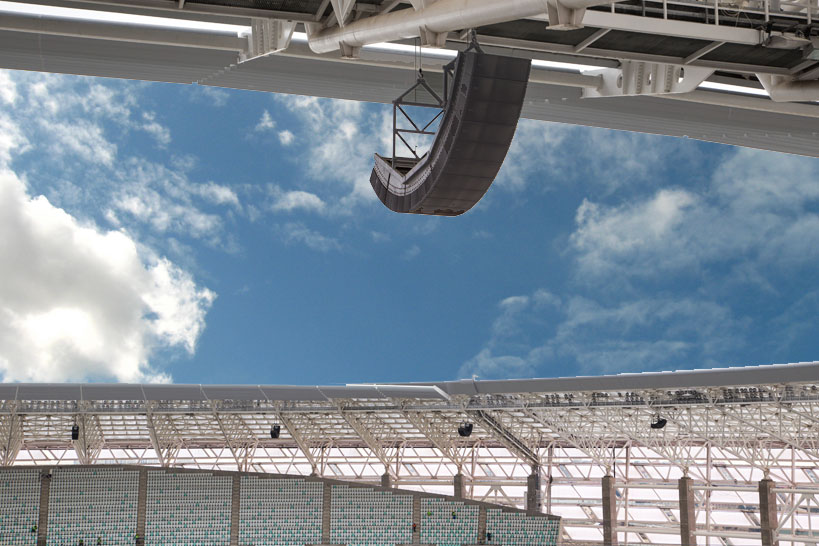
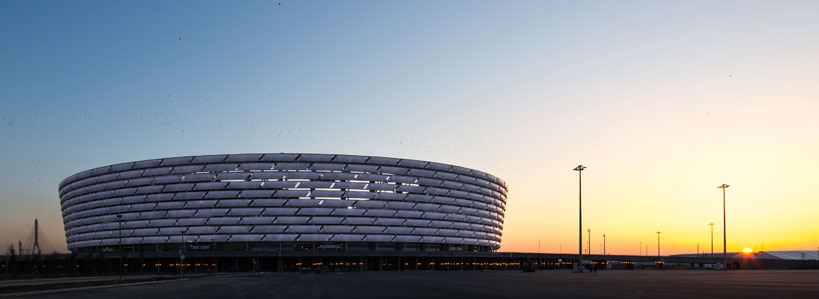

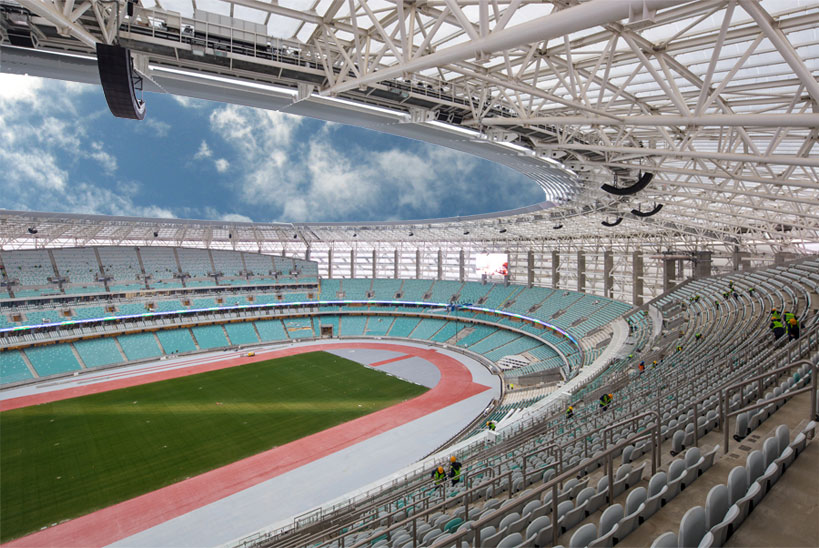
When RCF’s project team first arrived in Azerbaijan, in November 2014, construction work on the new stadium was already at an advanced stage. With a capacity of 68,000 spectators, and characterized by remarkable architecture, Baku Olympic Stadium was positioned to become one of the landmarks of Azerbaijan’s capital city, with a population of 2 million. It was officially inaugurated in March 2015 and it will host the inaugural European Games in June.
RCF’s Engineering Support Group (ESG) and R&D Department had worked together with the local distributor Asimetrik during the previous year, in order to develop the best acoustic solution for the venue. After the final approval and a Factory Acceptance Test in April 2014, with the main contractor, subcontractor and local distributor visiting RCF’s production facilities in Italy, official installation of the system started with the team’s first trip to Baku in November 2014.
“We used as many as 270 customized units of TTL55-A for 1 MW of audio power. This is one of the biggest permanent installations we have undertaken so far,” RCF explains. “It was a very stimulating project because our standard TTL55-A active 3-way line arrays had to be adjusted and customized, particularly in respect of their mechanic and electronic system”. Thanks to the significant expertise developed with previous experiences, such as Signal Iduna Park in Dortmund and other international stadia, the team rose to the challenge. “We made a few visits to Baku and provided some specific instructions for the set-up. The whole installation process was supervised remotely from our headquarters through RD Net,” adds RCF with obvious satisfaction.
TTL55-A modules were chosen due to their familiar vocal clarity and high SPL of more than 120 dB. These were two of the contractor’s main requirements for the system, because part of the audience is seated as far as 63 metres from the speakers. The final configuration is composed of 20 clusters, delivering excellent sound to all the tribunes (10 clusters containing 17 cabinets and 10 clusters with 10 cabinets, for a total of 270 cabinets).
An active line array was the right choice for this project because it allows very simple and discreet wiring, with only two signal cables – one for the audio signal and the other for the digital control system. Despite its imposing size, the system’s cabling is clean and easy to manage.
The overall acoustical design of the Stadium includes 64 units of P2110 (10’’ coaxial two-way speakers) for the under balcony area and 12 units of H1315 (3-way horn-loaded bi-amped mid throw cabinets) for the playing area.
The use of standard fly-bars was excluded from the beginning and a special frame was fabricated instead. The aim was to create line arrays flown parallel to the ground, ensuring perfect sound coverage to the whole audience when the cabinets are placed above the tribune.
“We drew a lot on the experience gained from Dortmund,” RCF states. A special frame composed of stainless steel mounting hardware and internal bracing with 16 lateral fixing points, suitable for the overhead configuration, was designed by a German engineering company. All TTL55-A cabinets were customized by RCF with metal backbones and internal supports for additional safety, making sure that the line array’s weight is safely supported by the steel structure and not just by the cabinets’ plywood.
Each single cluster is easily accessible thanks to independent motors, capable of lowering the frame at the tribune level. Once up in the roof position, each frame is secured to the roof structure through dedicated hooks and steel links.
The acoustical system in Baku Olympic Stadium has to withstand outdoor conditions 365 days a year. Hence all cabinets were processed with a special weatherproofing treatment consisting of external and internal polyurea finish and use of stainless steel for the mounting hardware and frame. Loudspeakers are reinforced with a special waterproof film and a multi-layer coating on the grille, highly resistant to humidity but transparent to sound.
RCF’s ESG and R&D Department together with Asimetrik developed a tailor-made solution allowing full monitoring of the system, making control, set-up and maintenance as simple and convenient as possible despite the large site. Each TTL55-A module is equipped with a sophisticated fault-monitoring board and reporting occurs through the RD Net control system.
The RD Net GUI (Graphic User Interface) allows a straightforward oversight of the whole system, including transducers, amplifiers, power supply and the whole audio connection path. The additional GPIO unit (General Purpose Input/Output) communicates any incongruity from the desired settings in terms of safety and acoustical performance. It sends an overall full and centralized report from a single station to any third party system. When a fault signal appears, it can be easily inspected through the RD Net GUI on the dedicated personal computer.
“Baku Olympic Stadium exceeded the customer’s expectations in many ways, not only in terms of excellent intelligibility, even when the stadium is empty, but also for the system’s high SPL and its distribution, designed to be in compliance with the latest international legislation. Moreover, the audio system fulfills all requirements of the EN 60849 standard for the electro-acoustic systems applied to emergency services, another area of long-standing expertise for RCF. Now we can’t wait for the European Games in June,” team members claim.
Related products
P 2110T
WEATHERPROOF COAXIAL TWO-WAY SPEAKER
- 200 W RMS power handling
- 124 dB max SPL
- 95 Hz ÷ 20000 Hz frequency range
- 10" woofer, 2.5" v.c.
H 1315
THREE-WAY PASSIVE SPEAKER
- Compact Arrayable 3-way System
- 15" neodymium woofer with 4" voice coil
- 10" neodymium midrange
- 136 dB Max SPL
TTL 55-A
ACTIVE THREE-WAY LINE ARRAY MODULE
- 3500 Watt, 4 way amplification
- 6 x high power neodymium transducers
- 96 kHz, 32 bit DSP processing
- RDNet on board

